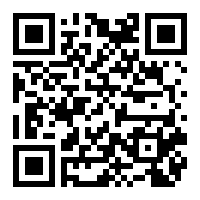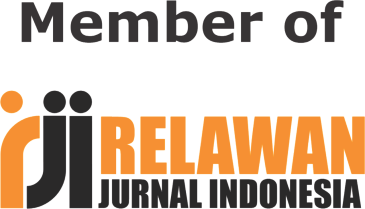Interconection and Local Wisdom of Malay and Arabs Ulamas Works: Study on Malay and Arabic Manuscripts’ Papers
Abstract
Malay and Arabs are two continents, located in different area, Southeast Asia and Middle East. Historically, writers as ulamas (religious prominent figures) tended to use watermarked papers for writing many things both related to religious, historical knowledge, and also their experience. Looking at the manuscripts existing nowadays, almost all Malay and Arabic manuscripts’ papers have unique and similar watermark images and countermark inside. It cannot be denied that historical background and context appeared behind the papers. Historically, the relationship among the countries since the coming of Islam to Malay -- that was in Aceh at the first -- gave the effect of produced and using the papers. Trade and diplomatic relation can be assumed as the biggest factor taken places in this aspect. Besides, Western countries also took important role in exporting their paper to other countries. In addition, they had colonized some Muslims countries both Southeast Asian and Middle East. As the most popular producers of watermark images, Western countries also exported their papers to other countries, including their colonized countries. This paper tries to elaborate ulamas’ paper in these two nations in its similarity and diversity to find local wisdom inside. Thereafter, to analyze the relationship among the countries is another focus of this paper. This paper tries to use Philological, codicological, and socio-historical approach in dealing with the content and physics of the manuscripts, and its historical context.
Keywords
Full Text:
PDFReferences
Alkhateeb, Firas. (2014). Lost Islamic History: Reclaiming Muslim Civilisation from the Past, London, C. Hurst & Co.
Azra, Azyumardi. (1995). Jaringan Ulama Timur Tengah dan Kepulauan Nusantara abad XVII dan XVIII, Mizan.
Bruinessen, Martin. (1990). "Kitab kuning; Books in Arabic script used in the Pesantren milieu; Comments on a new collection in the KITLV Library." Bijdragen tot de taal-, land-en volkenkunde/Journal of the Humanities and Social Sciences of Southeast Asia 146.2 (1990): 226-269.
Chambert-Loir, Henri and Oman Fathurahman. (1999). Khazanah Naskah: Panduan Koleksi Naskah-naskah Indonesia Sedunia, Jakarta: EFEO and Yayasan Obor Indonesia.
Chambert-Loir, Henri, 2013, Naik Haji di Masa Silam: Kisah-kisah Orang Indonesia Naik haji 1482-1964, Jakarta, Pepustakaan Populer Gramedia.
Churchill, W.A. (1935). Watermarks in Paper in Holland, England, France in the XVII and XVIII Centuries and their Interconnection, Amsterdam: Enno Hertzberger & Co.
Déroche, François. (2005). Islamic Codicology: An Introduction to the Study of Manuscripts in Arabic Script, London: Al-Furqan Islamic Heritage Foundation.
Dienaputra, Reiza, D. (2005). “Sejarah Kertas di Indonesia”, in Setiawan Sabana (ed.), Legenda Kertas: Menuju Jalan Sebuah Peradaban, Bandung: Kiblat.
Fakhriati (2013 June). “Paper and Its History in Acehnese Manuscript”, in Heritage of Nusantara; International Journal for Religious Literature and Heritage, Vol. 2. No. 1 June 2013.
Fakhriati. (2008). Menelusuri Tarekat Syattariyah di Aceh lewat Naskah, Jakarta, Puslitbang Lektur Keagamaan, Balitbang Kementerian Agama RI.
Fathurahman, Oman. (2012). Ithaf Al-Dhaki: Tafsir Wahdatul Wujud bagi Muslim Nusantara, Jakarta, Mizan.
Gacek, Adam. (2012). Arab manuscripts; A Vademecum for Readers, Leiden: E. J. Brill.
Gallop, Annabel Teh. (2004). “Ottoman influences in the Seal of Sultan Alauddin Riayat Syah of Aceh (r.1589–1604)”, in Indonesia and the Malay World, 32:93, 176-190.
http://jombang.nu.or.id/kitab-shorof-kiyai-mashum-seblak-yang-mendunia/
Humbert, Geneviève. (2012). “Manuscrits Arabes et Filigranes” in IPH Congress Book, Vol. 19, 2012, Denmark: Copenhagen.
Jones, Russell. (2011). “Watermark Icons – or Words? With Reference to Methods of Dating Malay manuscripts, in Paper History Journal of the International association of Paper Historians, vol. 15, 2011, Issue 1, pp 6-15.
Ilyas, Husnul Fahimah. (2011). Lontaraq Suqkuna Wajo: Telaah Ulang Awal Islamisasi di Wajo, Lembaga Studi Islam Progresif.
Indria, Reza. (2013). ‘Hikayat Makkah Madinah dalam Bahasa Aceh’ in Henri Chambert-Loir, Naik Haji di masa Silam: Kisah-kisah Orang Indonesia Naik Haji 1482-1964, Jakarta, Kepustakaan Populer Gramedia.
Kozok, Uli. (2006). Kitab Undang-undang Tanjung Tanah: Naskah Melayu Tertua, Jakarta, Yanassa and Yayasan Obor Indonesia.
Rahman, Ahmad and Syahrial. (2008). Katalog Naskah Koleksi Masyarakat Keturunan Indonesia di Afrika Selatan, Departemen Kebudayaan dan Pariwisata.
Rahman, Ahmad. (2009). “Penerbitan al-Hidayah dan Salim Nabhan Surabaya Jawa Timur”, in Dr Salahudin (ed), Lektur Agama dalam Berbagai Dimensi, Jakarta: Mishbah.
Regourd, Anne, "Les papiers Abū Šubbāk au Yémen et en Éthiopie", dans : A. Regourd (éd.), Documents et Histoire/Documents and History. Papier à marques en caractères non-latins/Papers bearing watermarks in non-Latin characters, Submitted to Leiden, E. J. Brill.
DOI: http://dx.doi.org/10.31969/alq.v24i1.464
Refbacks
- There are currently no refbacks.

This work is licensed under a Creative Commons Attribution-ShareAlike 4.0 International License.
Published by:
Balai Penelitian dan Pengembangan Agama Makassar
Office
 |
| Address: Balai Penelitian dan Pengembangan Agama Makassar (Jl. Andi Pangeran Pettarani No. 72, Makassar, Sulawesi Selatan, Indonesia) | |||
| Email: alqalamjurnal@gmail.com | |||||
| Website: http://jurnalalqalam.or.id/index | |||||
| Contact Person: Sari Damayanti (+62 81342653417) | |||||
Indexed by :














